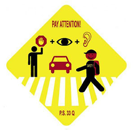Early Career Award
Sep 30, 2015 | Categorized In: Conference | Neuroeconomics
In other news, I was awarded the Early Career Award at the 2015 Society for Neuroeconomics conference. Unfortunately I had to leave shortly after the awards ceremony, and couldn't buy folks at the conference a drink, so here is an open offer on one drink for anyone at the conference passing through Berkeley!
2015 Society for Neuroeconomics Conference
Sep 27, 2015 | Categorized In: Conference | Neuroeconomics

So it was great to be back at Neuroecon after a 2 year absence due to teaching conflicts. Here are some broader trends that I found particularly exciting:
- Animal models of “stuff that we used to think of as special to humans”. Not long ago, it seems that any discussions of animal cognition and behavior begins and ends with a defensive remark about the dangers of anthropomorphizing. By looking into the neural and molecular mechanisms, we can start critically test those tantalizing analogies that come out of surface similarities. We now sophisticated talks about prosocial behavior in monkeys and rodents, monkeys doing the marshmallow test, and (no joke, in all the good ways) a rodent stock market(!).

- Attention and decision-making. Someone recently mentioned that the most valuable commodity in the modern economy is your attention. But understanding how attention influences decision-making has proven incredibly challenging. So it’s exciting to see a number of talks and posters on this topic. There’s probably no better time in history to be studying these questions.

1An amusing exception to this comes from a LinkedIn comment in response to a neuromarketing article that goes something like, “The brain is so yesterday. Why don’t you write about microbiomes instead? That’s where the exciting stuff is at!” With friends like this, who needs enemies!
An Eye-Opening Experience
Sep 20, 2015 | Categorized In: Translational research
Last week I had the privilege of sitting in on a neurology patient clinic. Over the course of three or so hours, I was part of a team that listened to the case of a neurological patient. Given the personal nature of the event, I will only be talking about broad generalities of the actual case. Instead these are a list of the striking aspects of the clinic for me:
- The intimacy of the diagnostic process: One patient, one family member, and, for what must be an incredibly difficult situation, a “normal” conversation about the patient history and symptoms. If I were in a similar situation, this is the team I’d want to see.
- How much there is that science cannot tell us: Two patients can have similar visible neurodegeneration and yet completely different symptoms. A patient with quantitatively greater degeneration can have fewer quality of life impairments than one with less damage. Yes, I knew that and it’s why I was there, but in the moment you wish we knew more, and empty that we cannot offer more.
- The trust between patient and physician: At several moments, it was made clear that if X were the diagnosis, there would be very little by way of treatment options. At that point, the patient could have just gotten up and left. Instead, the answer was something on the order of,
I’m here for my kids, and other people’s kids, if this happened to them.
Sure, words are cheap, but as the overseeing neurologist said, “We now know this because of the careful study of patients like you over the years.” None of that could have happened without trust on both sides.
Exploring Parallels between Medicine and Business
Sep 16, 2015 | Categorized In: Science of Business
One of the perks of being an academic is the ability to take a sabbatical and explore novel directions that we normally wouldn’t have the time or opportunity to do so. This semester, I am spending my sabbatical at UCSF Neurology, and hope to document some of the experiences here. I will be exploring some of the ways that our research in neuroeconomics can help neurologists in their diagnosis and treatment of behavioral dysfunction that often accompany neurological disorders.
As importantly, I am looking forward to learn about how neurologists deal with the immense uncertainties facing them and their patients. This is analogous to the uncertainties that marketers face with regards to their customers. I hope that I can take some of those lessons and apply them to marketing in general and neuromarketing specifically.
As importantly, I am looking forward to learn about how neurologists deal with the immense uncertainties facing them and their patients. This is analogous to the uncertainties that marketers face with regards to their customers. I hope that I can take some of those lessons and apply them to marketing in general and neuromarketing specifically.
So you CAN manage what you can't measure?
Sep 06, 2015 | Categorized In: Marketing Research | Science of Business
If You Can’t Measure It, You Can’t Manage It.
Many of us have heard of the phrase, "If You Can’t Measure It, You Can’t Manage It." It's a fun quote, and is becoming increasingly popular in this age of big data. It also has a halo of authority to it, having been attributed to gurus like W.E. Deming or Peter Drucker. I was going to use it in a paper, and casually figured I'd find out who (if either of them) actually coined the phrase.
Little did I know that in fact: (i) Drucker didn't say it, (ii) Deming didn't say it, (iii) Deming said something similar, but meant something completely the opposite.
The actual quote, by Deming, is, "It is wrong to suppose that if you can’t measure it, you can't manage it—a costly myth".
I'm sure there are multiple constructive takeaways here, but what I want to know is who the !@#$% is responsible for twisting this into its current meaning?!